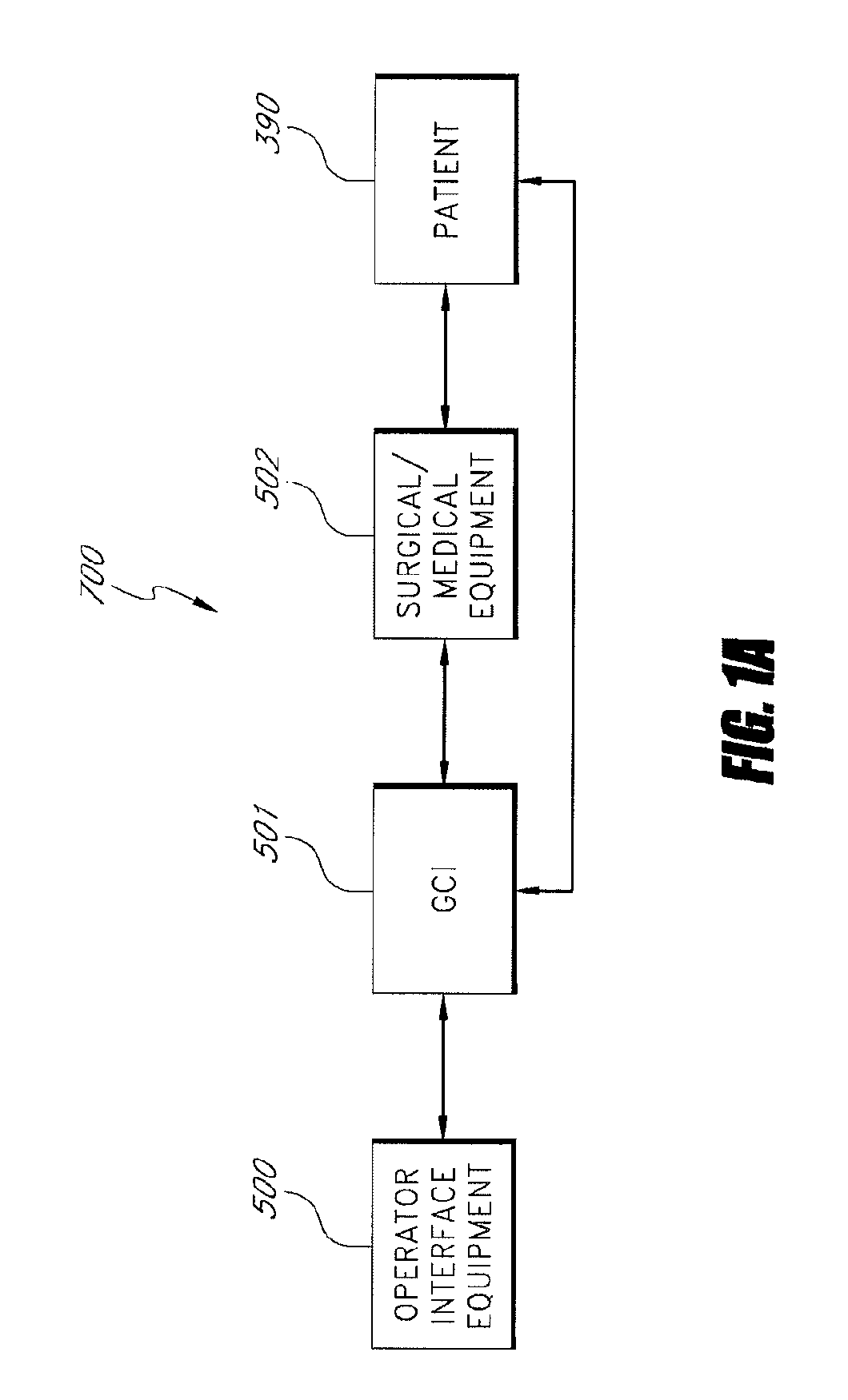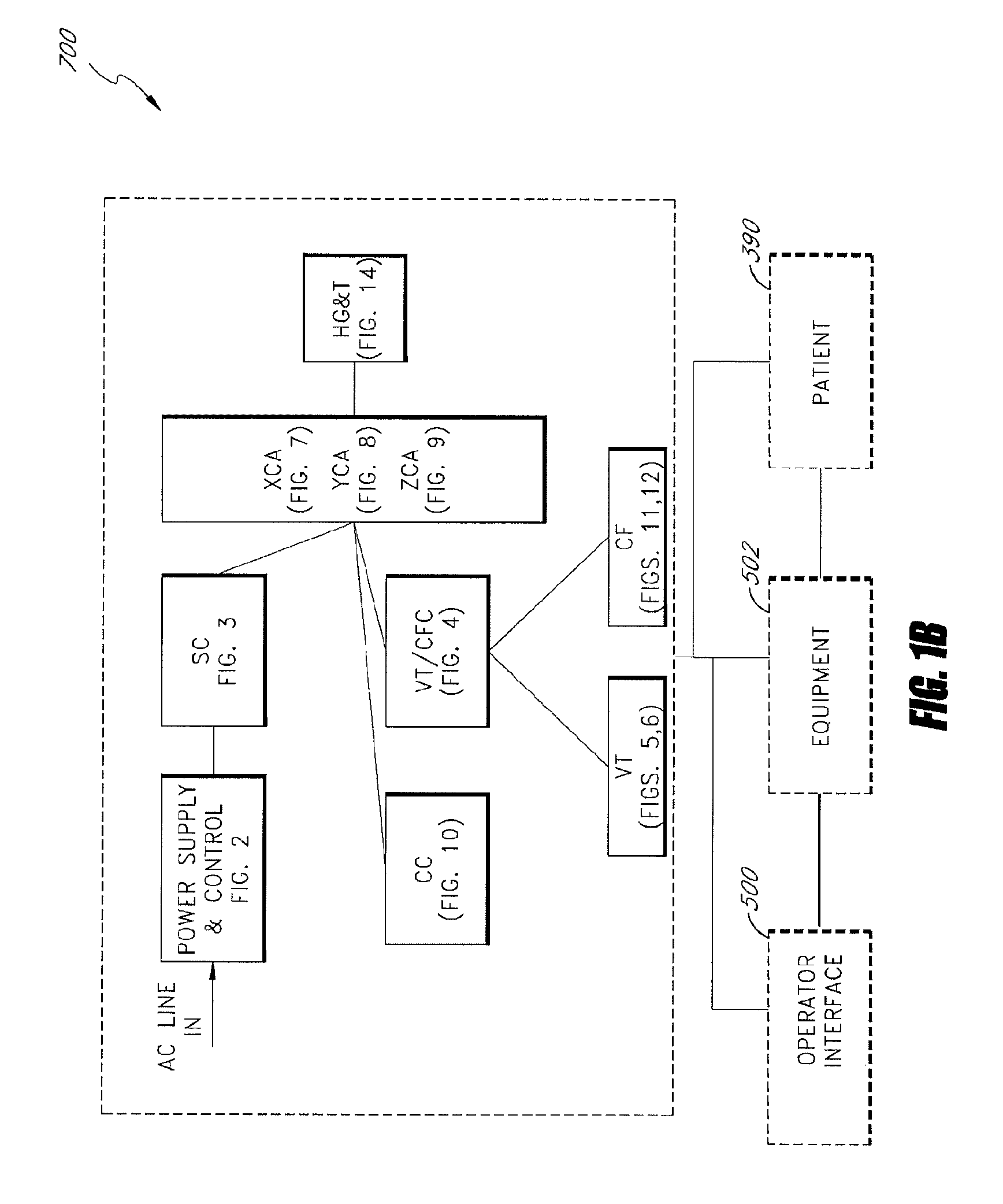Apparatus and method for catheter guidance control and imaging
a catheter and guidewire technology, applied in the field of system and technique for guiding, steering, and advancing invasive medical devices, can solve the problems of difficult to advance the guidewire to the stenosis, time-consuming and time-consuming technical difficulties encountered during angioplasty procedures, and the operator needs great skills that can only be achieved, so as to reduce the exposure of x-ray and contrast material, less training, and less skill
- Summary
- Abstract
- Description
- Claims
- Application Information
AI Technical Summary
Benefits of technology
Problems solved by technology
Method used
Image
Examples
Embodiment Construction
[0072]FIGS. 1A, 1B and 1C show a system 700 that includes a guidance, control, and imaging (GCI) apparatus 501. The system 700 further includes an operator interface equipment 500 and a surgical medical equipment 502. FIG. 1A illustrates an embodiment of the GCI apparatus 501 that includes various functional units. FIG. 1A further illustrates the overall relationship between these functional units and the operator interface 500, the auxiliary equipment 502 residing in the operating room, and the patient 390. FIG. 1B provides further details of the inter-relationships of these functional units and some of their components.
[0073]FIG. 1C shows the inter-relation between the GCI apparatus 501, surgical medical equipment 502, operator interface equipment 500, and a reference patient 390. A more detailed description of the GCI apparatus 501 and other auxiliary equipment, such as the surgical medical equipment 502, in the operating room will be described later in greater detail in connecti...
PUM
 Login to View More
Login to View More Abstract
Description
Claims
Application Information
 Login to View More
Login to View More - R&D
- Intellectual Property
- Life Sciences
- Materials
- Tech Scout
- Unparalleled Data Quality
- Higher Quality Content
- 60% Fewer Hallucinations
Browse by: Latest US Patents, China's latest patents, Technical Efficacy Thesaurus, Application Domain, Technology Topic, Popular Technical Reports.
© 2025 PatSnap. All rights reserved.Legal|Privacy policy|Modern Slavery Act Transparency Statement|Sitemap|About US| Contact US: help@patsnap.com



